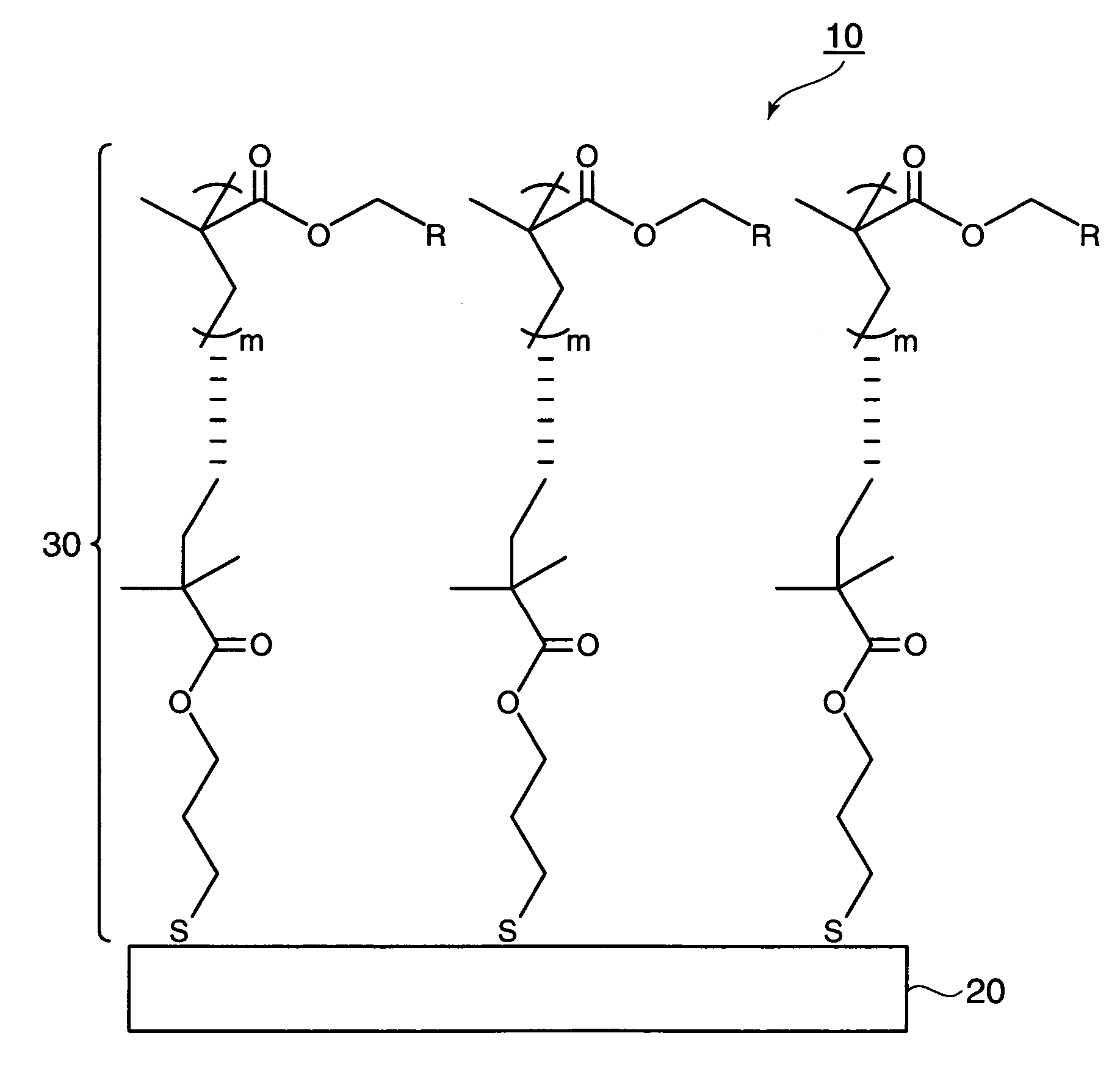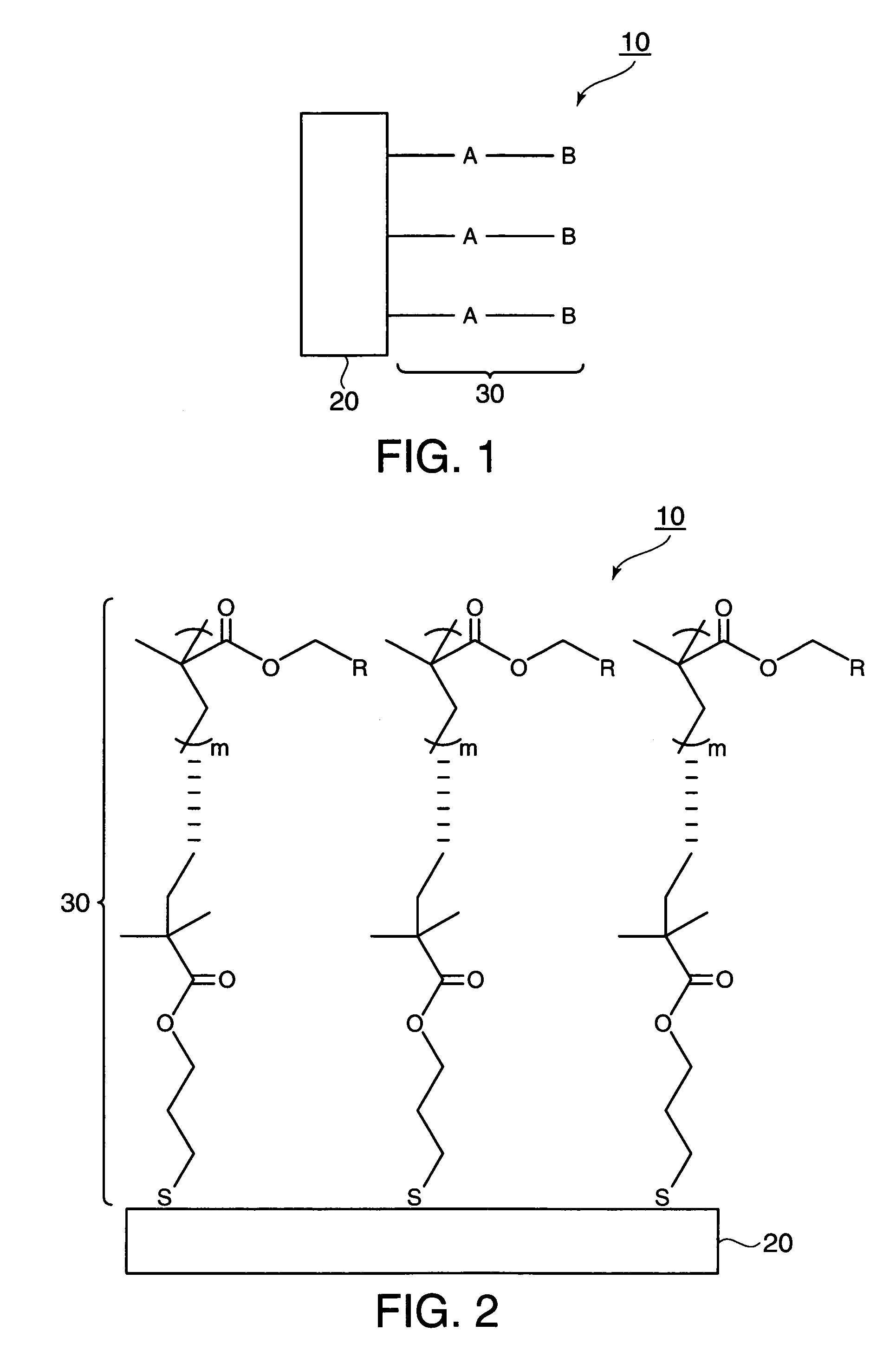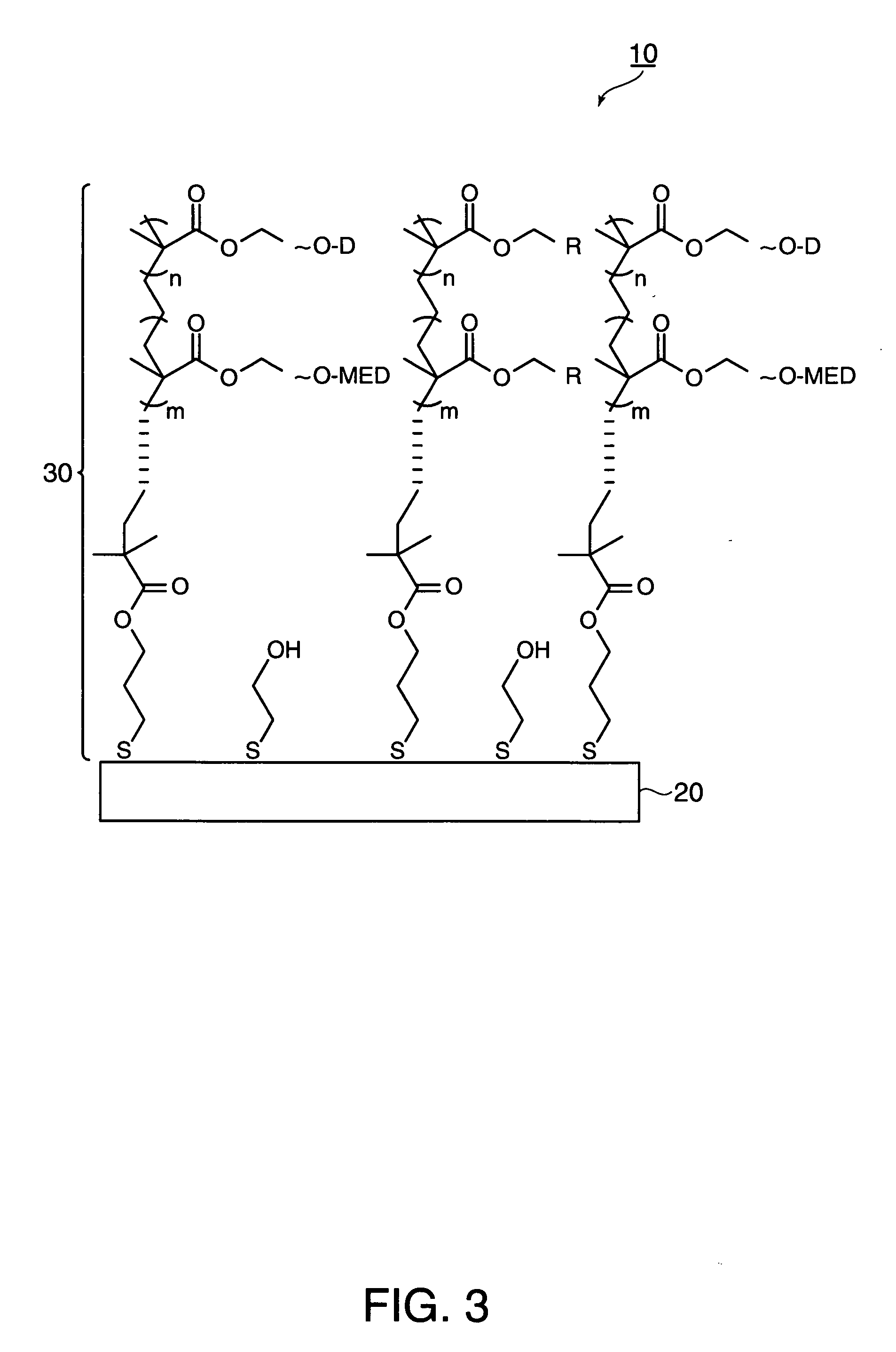Electrode substrate, detection device having the substrate, kit having the detection device, and detection method using the kit
a detection device and substrate technology, applied in the field of electrode substrates, can solve the problems of difficult control of nonspecific adsorption difficult to distinguish whether the target of monitoring is the target, and difficult to control the interaction between the surface of the electrode substrate and the biomolecule, etc., to achieve and efficient and selective electron permeation
- Summary
- Abstract
- Description
- Claims
- Application Information
AI Technical Summary
Benefits of technology
Problems solved by technology
Method used
Image
Examples
first embodiment
[0060]FIG. 2 shows a schematic cross section of the electrode substrate according to the first aspect of the invention. In FIG. 2, the part A shown in FIG. 1 contains trimethylene and the part B contains a group expressed in a chemical formula (5) below, where m represents an integer of 4 to 100.
[0061] Chemical formula 5:
[0062] If the m is smaller than 4, biomolecules, etc. adhere on the electrode surface, which makes it difficult to measure the accurate current value. If the m is larger than 100, the transfer of carriers such as electrons, holes, etc. to / from the electrode substrate becomes less efficient. In addition, by controlling the number of m's, the thickness of the membrane 30 used in the first aspect of the invention can be controlled. In the above circumstances, the R represents choline phosphate or —(CH2CH2O)lOH having an electron transfer function, where the l is an integer of 2 or larger and 50 or smaller. If the l is smaller than 2, the electron transfer function do...
second embodiment
[0064]FIG. 3 shows a schematic cross section of the electrode substrate 10 according to the first aspect of the invention. The electrode substrate shown in FIG. 3, basically the same as the electrode substrate shown in FIG. 2, has the electrode 20 and the membrane 30 that is configured of: the A, which is provided on the electrode 20 and contains trimethylene; and the B, which contains the above-described chemical formula (3). Further, in the membrane 30 shown in FIG. 3, a mediator (also simply called “MED”) is introduced near the electrode 20 through the intermediary of: a hydroxyl group contained in the R, which is the side chain of the chemical formula (3); or a maleimide group or an N-hydroxysuccinimide group derived from the hydroxyl group, triggered by the reaction with an amino group, a thiol group, etc. that are contained in the mediator. In addition, near the surface of the membrane 30 included in the electrode substrate 10 shown in FIG. 3, a biomolecule D is introduced thr...
third embodiment
[0083] In the invention shown in FIGS. 7A and 7B, a mediator that assists the transfer of electrons such as ferrocene, etc. can further be included.
[0084]FIG. 8 is a schematic plan view of a detection device 100 according to the third aspect of the invention that has: the electrode substrate 10 according to the first aspect of the invention; a counter electrode 70 corresponding to the electrode substrate 10; and a reference electrode 80. The detection device 100 shown in FIG. 8 only includes major electrode configurations. The counter electrode 70 used in the third aspect of the invention is not limited to but configured of platinum. The reference electrode 80 used in the third aspect of the invention, which is an electrode functioning as a reference for the potentials of the electrode substrate 10 and the counter electrode 70, is not limited to but configured of silver chloride. For example, by dropping a sample containing a target material so as to cover all of the counter electro...
PUM
| Property | Measurement | Unit |
|---|---|---|
| chemical formula | aaaaa | aaaaa |
| current | aaaaa | aaaaa |
| weight | aaaaa | aaaaa |
Abstract
Description
Claims
Application Information
 Login to view more
Login to view more - R&D Engineer
- R&D Manager
- IP Professional
- Industry Leading Data Capabilities
- Powerful AI technology
- Patent DNA Extraction
Browse by: Latest US Patents, China's latest patents, Technical Efficacy Thesaurus, Application Domain, Technology Topic.
© 2024 PatSnap. All rights reserved.Legal|Privacy policy|Modern Slavery Act Transparency Statement|Sitemap



